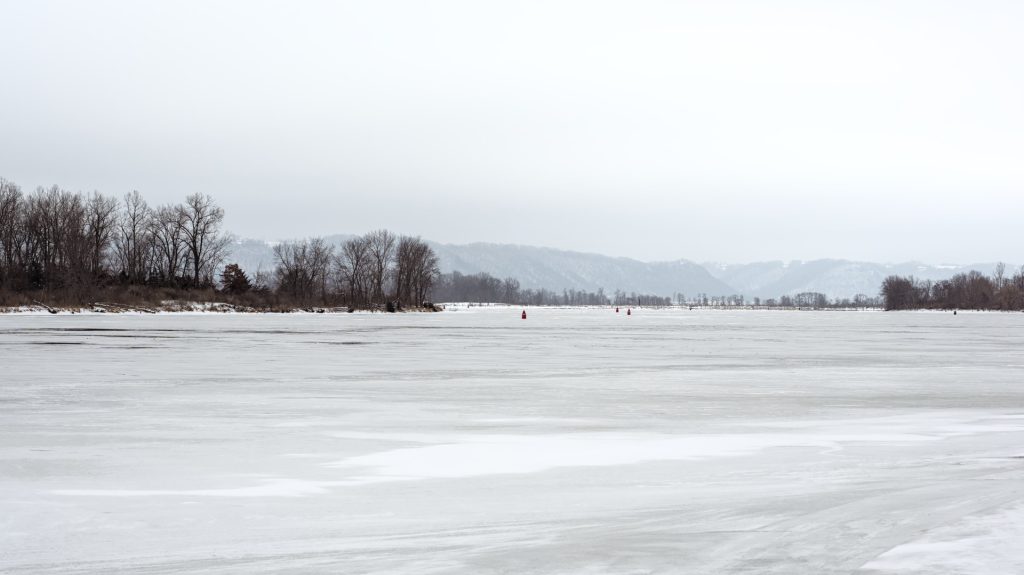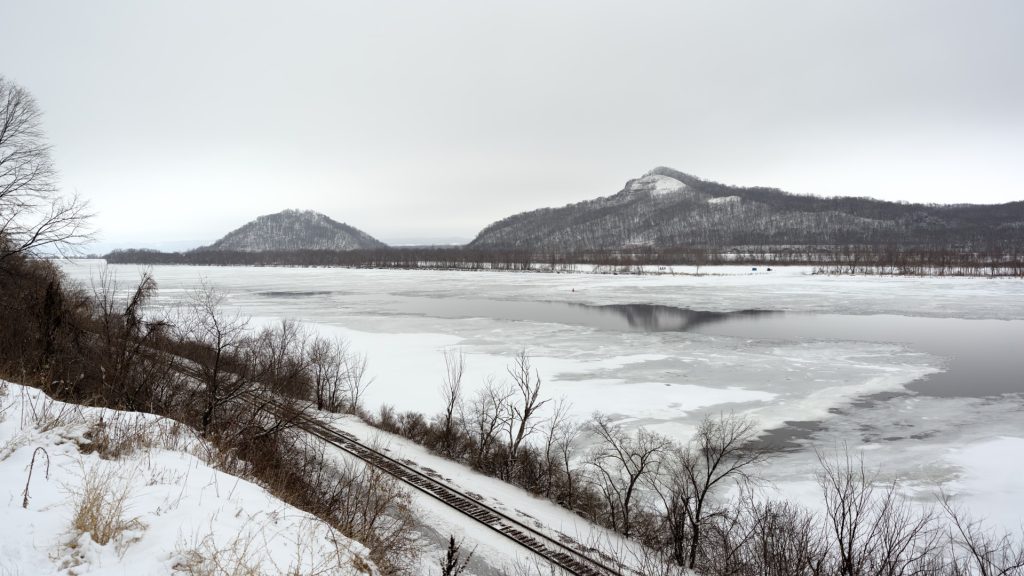Winter on the Mississippi River
It has been an exceptionally mild winter on the Upper Mississippi River in 2024, with little snow and average temperatures above freezing for much of the past month. It was a different story a year ago. I took these photos between Lansing, Iowa and Winona, Minnesota in 2023.
I. A Backwater Slough

II. The Main Channel

III. La montagne qui trempe à l’eau.

IV. A Reminiscence
In the 19th century, people used sled trains on the river ice during the winter to travel and haul goods. When the ice became too thin for a sled, people traveled by pony until the water thawed completely enough for boats to navigate the river. Antoine Grignon, a fur trader of French, Dakota, and Ho-Chunk ancestry, recounted the following story of a mail delivery that went awry during this period:
One year, in the latter part of winter, early in March, I think, Joseph Reed started from Prairie du Chien with the government mail bound for Winona. When he arrived the carrier from St. Paul was not there. It was mild weather, so Reed concluded to proceed on his journey until he met his partner from up river. By the time he reached Holmes’ Landing, the weather had grown considerably warmer, and the ice showed signs of breaking up. Still he pushed on, and urging his pony over the ice, sped away towards the north. On nearing Minneiska he heard the ice begin to give way — groan, crack, and move; looking about he saw that an island in the river offered his only place of escape from drowning, as the ice was fast breaking up. He made his way thither, and arriving in safety started to explore his new quarters. He had gone but a short distance when he ran across the St. Paul mail-carrier, who had likewise made the island in safety. By this time the ice in the river was moving fast, and before another day had nearly cleared. So there they were with little provision, shut off from mainland by a wide channel.
After their provisions gave out, they subsisted on rose-apples; they halloed in vain for help, but it was a sparsely-settled region at that time and no one heard them. After living on the island nearly two weeks, they were rescued by a party of Sioux who were coming down the river in canoes. The Sioux took the two mail-carriers into their canoes and left them at Holmes’ Landing, where after two weeks of recuperation they resumed their routes. They were weak, emaciated, and nearly starved to death.
Antoine Grignon and Eben Douglass Pierce, “The Recollections of Antoine Grignon,” in Proceedings of the State Historical Society of Wisconsin at Its 61st Annual Meeting Held Oct. 22 and Dec. 19, 1913, (Madison: State Historical Society of Wisconsin, 1914), 116.
See also: Summer on the Lake